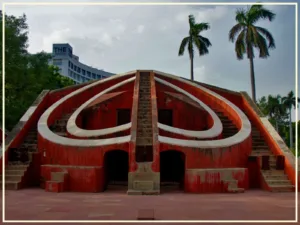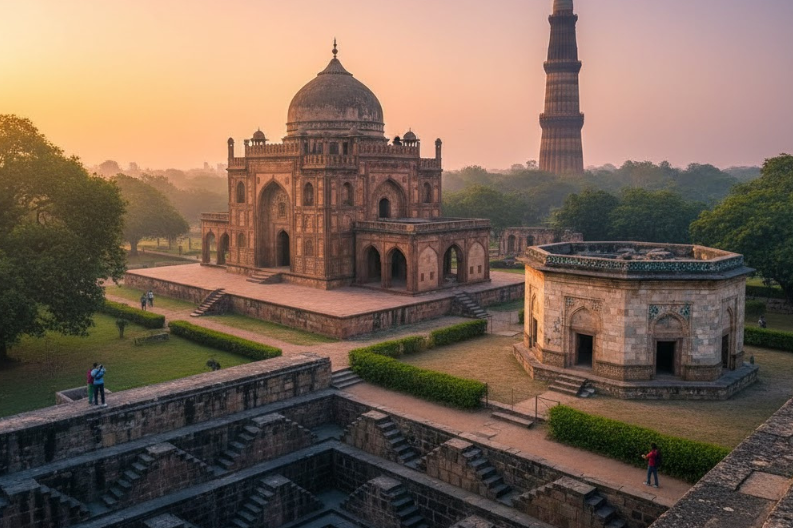Indians have been the first ones to discover a lot of technologies and discoveries. In fact, in medieval times, Indian kings were so keen to learn more about science and develop techniques to do things differently that they discovered and curated many significant architectural structures and instruments around the country. One such phenomenal place of wonder is the Jantar Mantar in Delhi.
Delhi’s Jantar Mantar is one of the five such astronomical observatories built by Maharaja Jai Singh II of Jaipur. It helped people in the past times (when there were no relevant technologies) to assess and understand various facts about the world of astronomy and geography. It is also a splendid piece of historical architecture, just like Qutub Minar.
Today, we will discuss in detail Delhi’s Jantar Mantar and the architectural instruments that are present there. So dive deep into your keenness and discover the lengths that the Maharajas in the 18th century went to create some outstanding instruments.
How the Jantar Mantar of Delhi Came Into Being?
Maharaja Jai Singh II, also known as Sawai Jai Singh, was the 29th Rajput ruler of the Amber Kingdom, who took upon himself the task of adorning the city of Jaipur with splendid architectural gifts. He had a keen interest in architecture, astronomy, and mathematics, and he always worked to explore the mysteries of the world and outer space deeply.
One day, he was sitting in the court of Muhammad Shah, the Mughal Emperor, when the courtiers were debating about the most auspicious date for an emperor’s vital journey to start. At that time, he felt the need to be able to identify the correct date and time each day. Also, his tutor Jagannatha Samrat was himself quite knowledgeable and keen, and he instilled curiosity within the Maharaja in his childhood years only.

As a result, Sawai Jai Singh took upon himself the task of developing astronomical observatories in different parts of the country. He began by creating the biggest observatory in Jaipur, which has a plethora of buildings that use trigonometry, algorithms, and astronomy to identify the date, time, planets, etc. Later, he went on to build four other observatories in Delhi, Mathura, Benaras, and Ujjain, all of which came to be called “Jantar Mantar.”
Jantar means instruments, while Mantar means calculation. All these observatories, including the Jantar Mantar of Delhi, were remarkably accurate. They had instruments even better than the instruments used by European Jesuit astronomers.
The construction of Delhi’s Jantar Mantar began in 1723, during the ruling time of the Maharaja in the 18th century. However, the observatory witnessed significant decay during the time of the British Raj, especially in the uprising of 1857. Later in 1901, Maharaja Ram Singh, a kin of Sawai Jai Singh, worked to restore all the instruments in the best possible way.
Instruments in Delhi’s Jantar Mantar
The Jantar Mantar in Jaipur is considerably big, containing 19 astronomical instruments. However, Delhi’s Jantar Mantar is comparatively small, with only 4 major instruments of prominence and a few other small instruments. Let us talk about these instruments and what they help in doing.
-
Samrat Yantra
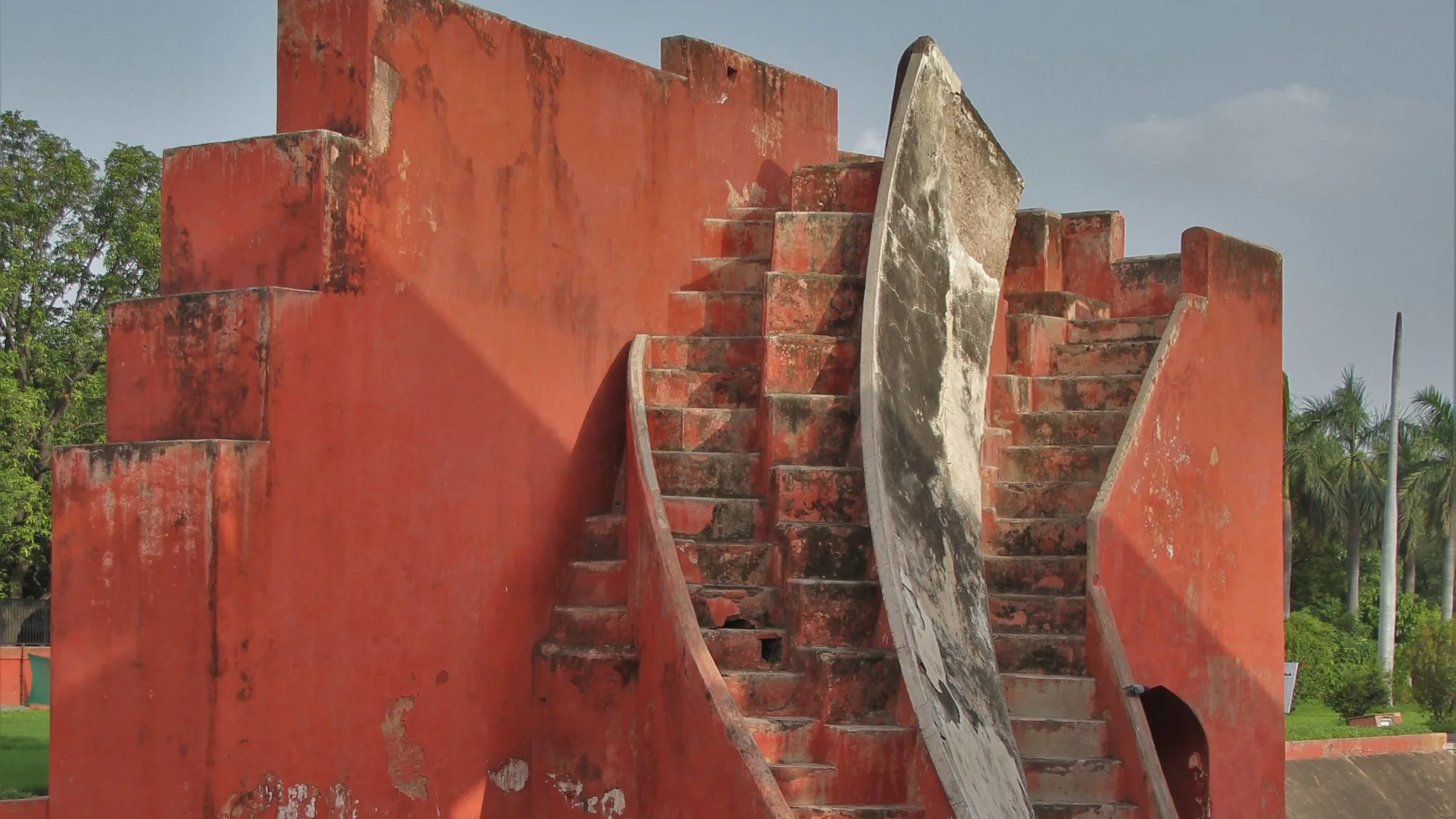
Translated to “Supreme Instrument” in English, the Samrat Yantra is an equal-hour sundial. It is a giant triangle with a height of 70 feet, a base of 114 feet, and a thickness of 10 feet. The hypotenuse is 39 m long and is parallel to the Earth’s axis, pointing towards the north pole. On the other two sides of the triangle, the indications are marked for hours, seconds, and minutes. While there were other sundials too in the country, this one specifically was able to predict the declination of the planets and other celestial bodies, which no other sundial could.
-
Misra Yantra

With “Misra” meaning “mix,” this yantra was actually a combination of five separate instruments. These were supposed to work in synchronization to identify the longest and the shortest day of the year. In different cities of the world, this instrument could also be used to note the time of noon and tell when it was noon in any part of the world. It is the only building the in the observatory that Jai Singh II didn’t create. Recently, the ASI took up work to repair it.
-
Jaya Prakash Yantra
It is a rather technical yantra, which you can understand only with the help of a guide. The yantra has hollowed-out hemispheres with some markings on its concave surface. On the rim, there are points where the users stretched crosswires. By aligning the position of the star with the marking, a person could give coordinates of the celestial objects.
-
Rasivalya Yantra
There are twelve Rasivalya yantras in the Jantar Mantar of Delhi. Each of them measured the latitude and longitude of the celestial objects as and when they crossed the meridian.
-
Rama Yantra
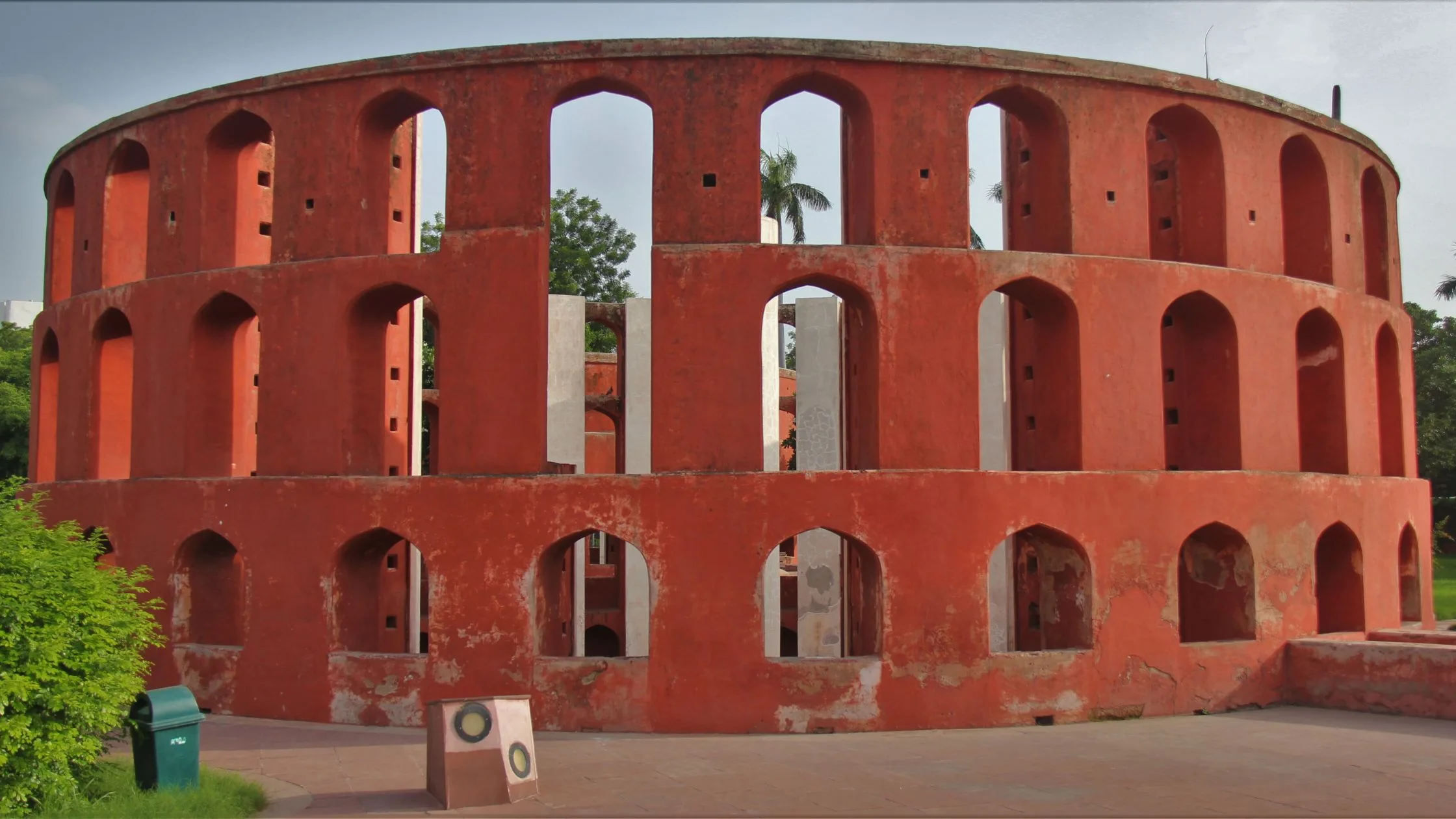
This yantra was used to measure the stars’ altitude based on Earth’s latitude and longitude. The yantra has two large cylindrical structures which are open at the top.
-
Shasthansa Yantra
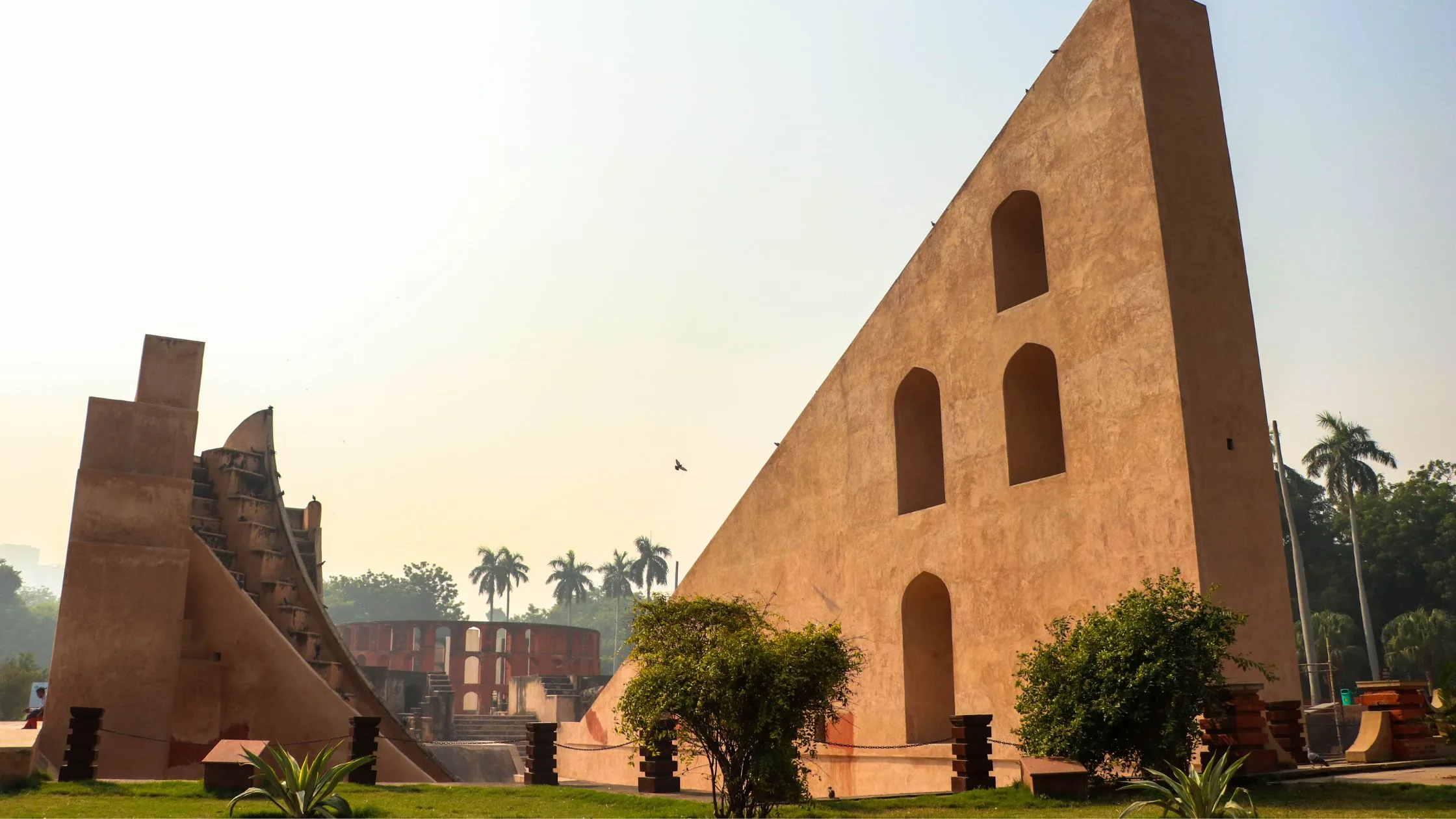
This yantra has been built with towers supporting the quadrant scales. It uses a pinhole camera mechanism to measure the distance, declination, diameter, and other specifications of the sun.
-
Kapala Yantra
This architectural structure is built quite similar to the Jai Prakash. However, it is used as a demonstration to identify the shift from one coordinate system to another. Thus, it cannot be used for active celestial observation.
When visiting Delhi’s Jantar Mantar, it becomes vital to have a tourist guide with you who can explain the importance of all these structures and how they work. It becomes a bliss for students of astronomy and science to know about the mathematics in designing and using all these structures.
Some Intruiging Facts About Jantar Mantar
Jantar Mantar is undoubtedly one of the most amazing phenomena of India that makes Indians and people around the world wonder about the zenith of science and technology which India reached in the 1800s. Below are some lesser-known and interesting facts about Delhi’s Jantar Mantar, which you must know before visiting it.
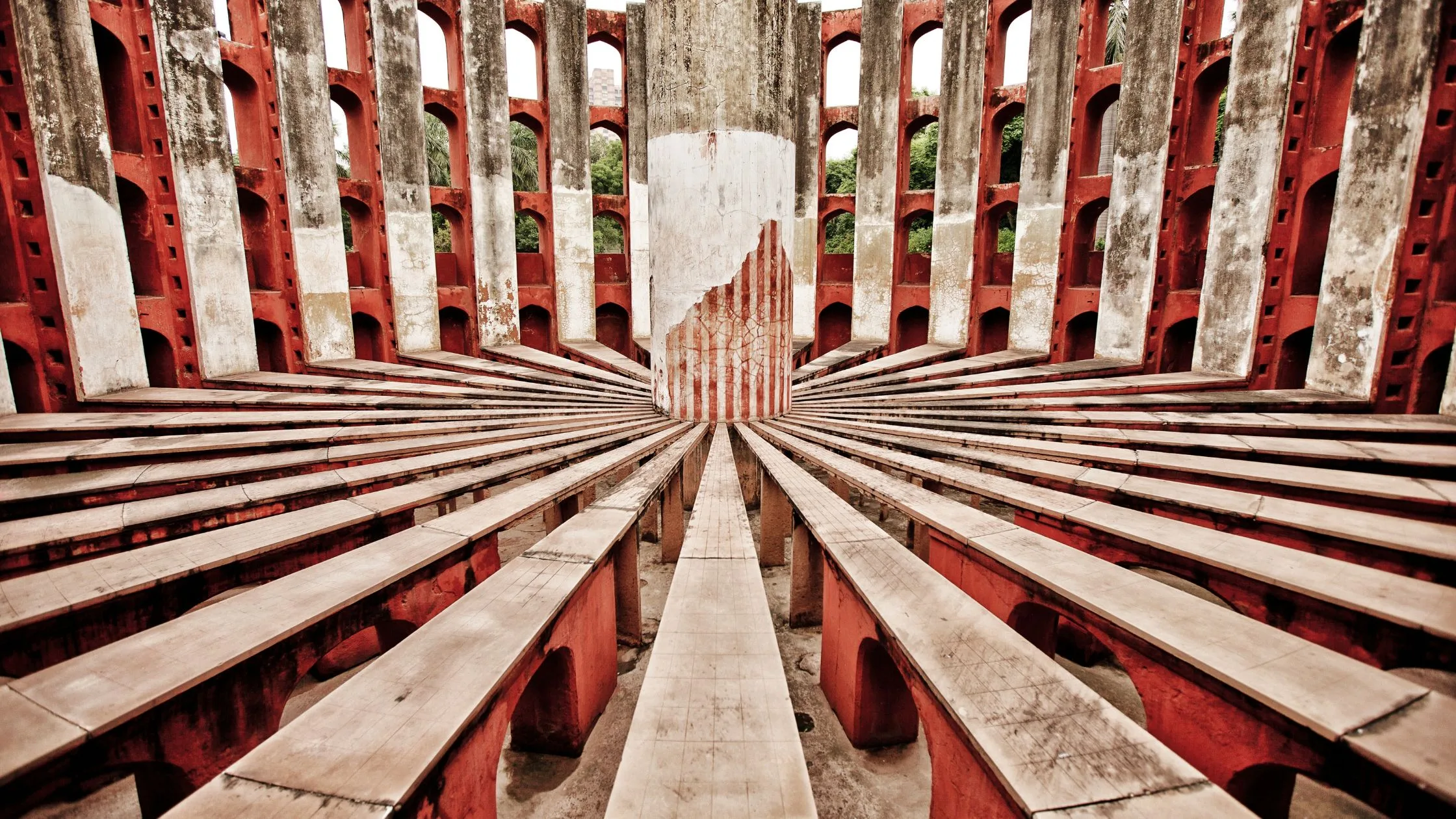
- The sundial in the Jantar Mantar, also called the Samrat Yantra, measures almost the accurate time of the day (correct to half a second).
- A plaque on the structure has written its construction date to be 1710 mistakenly. But the actual year of construction of the observatory in 1724.
- Based on the structures of Jantar Mantar, many contemporary art pieces have been created in different parts of the world, such as the Observatory House in Mexico.
- Samrat Yantra is the mightiest sundial in the world.
- As of today, the government has created an audio guide which is available on the website of Delhi Tourism. On this site, you can find the audio telling the history and the science behind all the structures.
Final Words
Sawai Jai Singh constructed 5 Jantar Mantar in different cities in India. However, as of today, only four of them remain intact, as the one in Mathura was destroyed, and consequently, it ceased to exist. It has gained immense prominence since its creation, and scientists and people from all over the world come to visit this place to be awe-struck by its architecture and the science involved in making it.
Whilst planning a visit to Delhi’s Jantar Mantar, make sure you have with you the audio guides or get the help of a government-certified guide to understand in detail about the instruments. Nevertheless, our blog is always here to guide you and help you have a wholesome experience!

